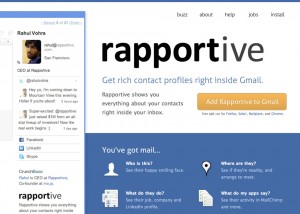conference EFL eikaiwa ETJ Language learning online resources presentations self-study Uncategorized
by sendaiben
leave a comment
ETJ Expos 2012
I’m very happy to announce I will be presenting at four of the ETJ Expos this year:
- Tokyo (Sunday, Nov 4)
- Nagoya (Sunday, Nov 25)
- Sendai (Sunday, Dec 2)
- Fukuoka (Sunday, Dec 9)
My presentation is sponsored by Oxford University Press, and I’ll be talking about free online resources to help students study independently.
_____________________________________________________
SRS, RSS, LMS: online tools to boost language learner efficiency
The internet has already revolutionized language learning, giving learners access to resources that would have been inconceivable even five years ago. In this presentation Ben Shearon will introduce free online resources with the potential to transform English language learners’ self-study. Suitable for all levels and ages.
_____________________________________________________
Other than the presentation, I’ll be catching as many presentations as possible and hope to meet and talk to a lot of people. Hope to see you there!
eikaiwa iPhone kids Language learning materials online resources personal Review school management technology
by sendaiben
2 comments
Nexus 7 Tablet Review
The Nexus 7 tablet by Google and Asus was finally released in Japan last month. I am a huge Google fan and am looking for alternatives to the iPad for the classroom. It was too good an excuse, so I went ahead and ordered one.
My wife has an iPad 2, and I will be comparing the Nexus 7 to that, as well as to my iPhone 4S. This is my first Android device.
In brief: it’s great. I really like the 7″ form factor. It feels much lighter and easier to hold than the iPad, and at just under 20,000 yen, it is less than half the price of the new retina iPad.
The good:
- size and weight are much more user-friendly than the iPad
- screen is good with internet, ebooks, and movies
- Android OS is fast and fairly intuitive
- 2000 yen credit for the Google Play Store
- One movie and three books included
- Lots of Japanese content on the Play store, including ebooks
- E-reader includes an easy to use J-E/E-J dictionary
- Skype is really easy to use
- Not as many apps as iOS
- No Flash support! This is huge, as most of the websites I want students to use with this (WordEngine, Starfall) are flash-based
- Not as intuitive as iOS in terms of navigation, etc.
Overall:
I love this tablet. For reading ebooks, watching movies, carrying around with me, reading PDFs, accessing the Google online world (gmail, reader, drive, etc.) it is wonderful. I’m really glad I got it, and it will supplement my iPhone 4S for most of these tasks.
However, unless I can get around the lack of Flash support (there seem to be workarounds for it, but they are not official and involve some risks) we won’t be buying these for students to use in class. It’s a shame, as the smaller and lighter form factor would make them easier to use for children than iPads.
Basically, if you use Google sites like gmail, drive, and reader, if you read ebooks and need a tablet to take movies and music on the road with you, this could be ideal. As a classroom tool it is crippled by the lack of Flash support.
Anyone else tried the Nexus 7?
Making Gmail even better: just add Rapportive
A short, practical one today.
If, as I do, you enjoy the flexibility and features of gmail, please consider adding rapportive (an add-on that works in Safari, Firefox, and Chrome).
In a nutshell it displays information in a sidebar about the person who sent or received the email you are looking at, including social media, previous email exchanges, and photo. It’s a godsend if you can’t quite remember who someone is, and helps you keep up with what people are doing.
Oh, and did I mention it’s free?
curriculum EFL expectations language courses Language learning online resources teaching technology university
by sendaiben
5 comments
Independent study in a computer lab (my steep learning curve starts here!)
I started teaching in a computer lab for the first time this semester. It’s been a bit traumatic so far, as the classroom dynamic changes a lot, but I’m enjoying the challenge so far.
Yesterday we had our first proper class, and I decided to run it as an independent study session to allow students to familiarize themselves with some useful online tools. There were 35 2nd-year non-English majors in the class, and their English ability and familiarity with computers varied wildly. You can see my lesson briefing on my teaching blog here.
The lesson was partly successful, but I can see how to make it better and was very excited by the potential of using a blog or website to communicate with students. Here are my major impressions of the class:
- I tried to do far too much. None of the students had enough time to finish, and that was very harmful to the classroom atmosphere and their feelings towards the course. This is the #1 thing I would change about the lesson
- Only a couple of students asked questions/for help. Need to spend more time getting the class comfortable with calling me over to help with problems
- Unforeseen technical problems reared their ugly heads: the NY Times website does not allow popjisyo to load individual articles (something I only noticed when a student pointed it out) and the edublogs comment feature is a bit too aggressive in its attempts to deter spambots. Both of these caused a lot of frustration to my students
conference EFL eikaiwa language courses Language learning online resources presentations self-study technology TED theory
by sendaiben
2 comments
The future of online language learning and translation
This video is really interesting and a little scary. I’m going to have to start polishing my resume.



